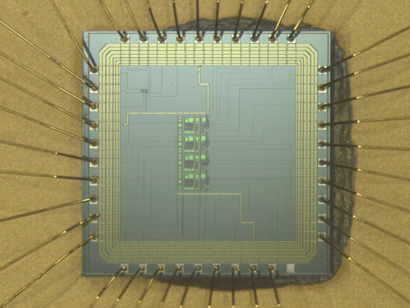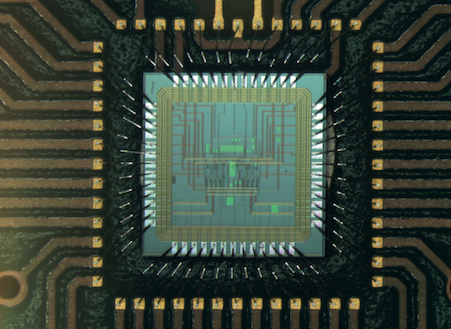The radiation protection group of the HSE Unit uses mainly monitors based on ionisation chambers for the monitoring of ionising radiation on CERN sites.
Ionisation chambers are generating charges depending on the dose rate of the radiation field they are exposed to. When natural background radiation level is measured, the output current of the ionisation chamber is in the order of few femtoamperes (fA) and this output current may reach few microamperes (μA) in the presence of high levels of pulsed ionising radiation in some machine and experimental areas.
Measuring such currents, with a high accuracy at low radiation level and a long term stability as well as on a wide dynamic range, is definitively a technological challenge.
Early 2012, the CERN radiation protection group launched a microelectronics project for developing an ASIC (Application Specific Integrated Circuit), named “Utopia” (Ultralow picoammeter), that could serve as the frontend of an efficient and auto-calibrating measuring chain. Mid of 2014, a first version of the ASIC was working and whose aimed at helping to understand the various noise and drift phenomena, in particular the various leakage currents at stake and the way to minimise their effects on the measurement. The good results obtained with the first chip have paved the way for the design of a new version of the ASIC, “Utopia-2” with improved performances and therefore for a second run at the chip foundry beginning of 2017.
Tests performed in 2017 on "Utopia-2" have shown promising results that triggered the next phase of the project to start mid-2018. This phase will consist in the complete detailed characterisation of the chip and its first integration in a radiation monitor prototype.
“Utopia” and “Utopia-2” ASIC designed by Evgenia Voulgari.
Contact person: Daniel.Perrin@cern.ch


